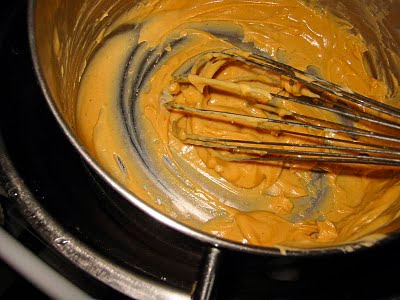Dan Earle in Nova Scotia
This is the first in a series of interviews we will be doing with folks who are just beginning to make cheese. We know many of you are starting your cheese adventure, so we hope you might draw some inspiration from these interviews. In other words-you should see that you are not alone!
A few weeks ago, Dan Earle from Nova Scotia wrote to us with a great suggestion for our Off the Wall Press Plan:
I bought an Off the Wall Cheese Press plan and started thinking about what to do about a bracket as that is something most of us don’t have around the house. I went browsing at the local hardware store and found the item below.
These little wheel things come in a variety of types and sizes and are easily modified for the cheese press bracket. Just replace wheel with the press arm. Might want to put a note in the press plans if this has been a problem for anyone.
Also, I had a couple of failures on getting good curd. Pretty sure it is milk supply issue and can be fixed. What I want to know is there anything useful to be done with the too soft curd failures? I hate to just pour it down the drain.

A few days later, he wrote another quick note:
I tried using the dried milk recipe on the Mozzarella and it worked fine. My first batch. Loaf a bit raggedy because I almost made string cheese while stretching. About 400 grams from the gallon of milk and cup of 18 percent cream. Gave half to neighbor.
It was at this point, that we realized many of you might be interested in knowing more about Dan and his experiences. So, we sent him a few questions and he was kind enough to respond:
 Can you tell us a little bit about who you are and where you are from?
Can you tell us a little bit about who you are and where you are from?
My wife and I are retired teachers. We moved to coastal Yarmouth, Nova Scotia, in 1998 because we love the Maritime climate and were very engaged sea kayakers.
We bought a 1860’s basic “carpenter gothic” house in the country and spent three years restoring and upgrading it.
I am active in the local foods group, help with community gardens, paint watercolours, have a vegetable garden in the summer and am learning the cello. My wife is a photographer and we both have work in our local Waterfront Gallery.
Note: Dan does indeed paint watercolors!! (These are just a few of our favorites we found on his website-. www.danearle.ca.)
What made you decide to make cheese?
I read Barbara Kingsolver’s “Animal, Vegetable, Miracle” with the chapter on Ricki and her workshops and Barbara’s experience. I have experience making bread and wine and had just never considered cheese. It never registered in my mind that cheese was something that I could do. Enlightened. Wow! I could do this. I am 72 years old and “can’t do this” is not a part of my vocabulary.
What was the first cheese you tried?
I purchased the Hard Cheese Kit because I like Cheddar. Jumping right in I got my two gallons of milk together only noticing later that all the other hard cheeses took one gallon. I missed the part about water baths and cooked it all on top of the stove which I later read was a “no-no.”
My curd was a bit soft, I thought, as it did not make the nice crease shown in the photos. But, surprisingly, it worked. I got curds and got them into the mold and did a make-shift press and it worked – I think. It sat for the required 3-5 days to get a little rind, got waxed, and is now aging in my wine cellar. Will let you know in eight weeks. It might not be cheddar but it sure looks like cheese.
What did you make next?
Well, I thought, eight weeks is a long time to wait for the result. I ordered the Mozzarella and Ricotta Kit. Piece of cake, just a hour or so and ready to eat. The great awakening.
I used the same milk and cream I used for the Cheddar and could not get a useful curd. It just would not get firm enough. I don’t take “can’t do” as an answer. Jumped to Mozzarella Made with Dry Milk recipe. Wow! It worked. Immediate satisfaction and shared the result with our neighbor who loved it. May have a new advocate there. Next is Ricotta with the dry milk base. I need to find out pasteurization temperatures from our local dairy as I would prefer using home grown milk.
Any tips for others starting out?
Take a “can do” attitude. If you can make a cake, make bread, preserve food, make jam, or cook a decent meal you can do this. Good to have some nesting pots to control temperatures in baths, unlike my “lucky cheddar” experience. Start out with a gallon sized recipe. The milk quality is important. I lost two gallons and added cream on my Mozzarella tries because the curd was not fully formed, too soft. Once you have the curd you will get cheese.

Any thing you would like to know?
Getting good curd seems to be the most important step. If you have that you will have something you can eat. What can we do with a failed curd mixture? That is, it just does not make a nice firm custard like mix with the qualities shown in the instruction drawings and photos. Is it down the drain or is recovery possible? Can I just put it in cheese cloth, drain it, and hope for the best? I make yogurt cheese like that and it is very good. Knowing what to do when things don’t work out is just as important for beginners as instant success. I have been both places in just two weeks.
How does cheese fit into your food philosophy?
Here in Nova Scotia the concept of local food sustainability is catching on, slowly. We have had great support of our local producers at our farmers market but we have a long way to go. For the first time we had a local cheese maker participating this year. We try to eat “close to home” but it is not easy. Bread is easy but the grain is not local. Wine is simple but the grapes are mostly not local. Cheese, however, can be made with local milk. With a bit more experience than my two weeks experiment I think I can work out some of the details and pass on the good news of cheese making to others.
Here is a follow-up hard cheese, a Monterey Jack just out of the press. This time I used two pots, a smaller one inside the bigger one with a water bath. That worked great for controlling temperatures. Followed the recipe that came with the kit and it worked fine. Still using dried milk powder mix as base until I find a good local source.
If anyone knows of a good milk source in Yarmouth, Nova Scotia, please let us know at info@cheesemaking.com.






















































































































































